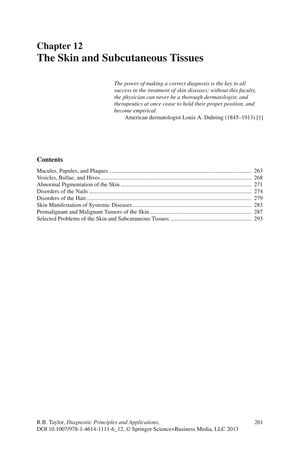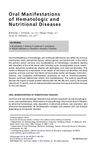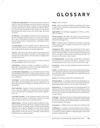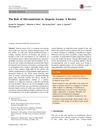The Skin and Subcutaneous Tissues: Conditions, Diagnosis, and Systemic Implications
January 2013
in “
Springer eBooks
”
skin pigmentation pernicious anemia hemochromatosis argyria colloidal silver erythema dyschromicum perstans drug-induced hyperpigmentation Addison's disease Mees' lines Beau lines half-and-half nails yellow nails nail pitting HIV infection digital clubbing scabies intertriginous xanthomas familial hypercholesterolemia Buruli ulcer Mycobacterium ulcerans silver poisoning HIV familial high cholesterol

TLDR The document concludes that skin and nail changes can indicate various underlying health conditions.
The document from 11 years ago discusses various skin and subcutaneous tissue conditions, their diagnosis, and associated systemic implications. It describes the id reaction, a vesicular rash on the fingers often triggered by fungal infections, and urticaria, with a study of 130 patients identifying causes in only 45% of cases. It details erythema multiforme, often associated with herpes simplex, and abnormal skin pigmentation as an indicator of conditions like pernicious anemia and hemochromatosis. It also covers argyria from colloidal silver use, erythema dyschromicum perstans, drug-induced hyperpigmentation, and Addison's disease. Nail conditions such as Mees' lines, Beau lines, half-and-half nails, yellow nails, and nail pitting are linked to various diseases, with HIV infection mentioned as a cause of digital clubbing. The document also notes the "wake sign" for scabies diagnosis, intertriginous xanthomas as a sign of familial hypercholesterolemia, and Buruli ulcer caused by Mycobacterium ulcerans. It briefly mentions a correlation between skin wrinkles and bone health and a method for assessing handedness via thumbnail patterns.




